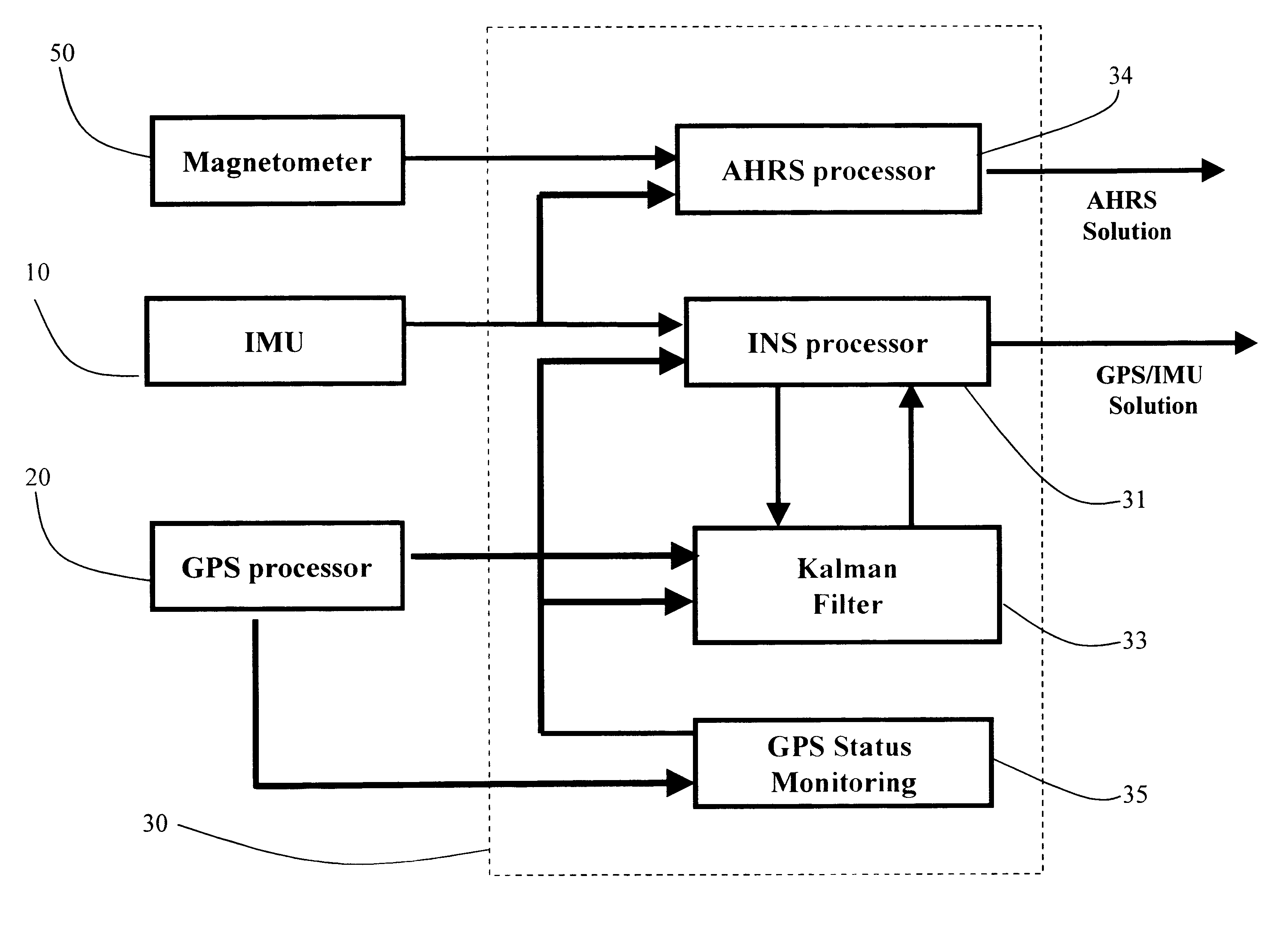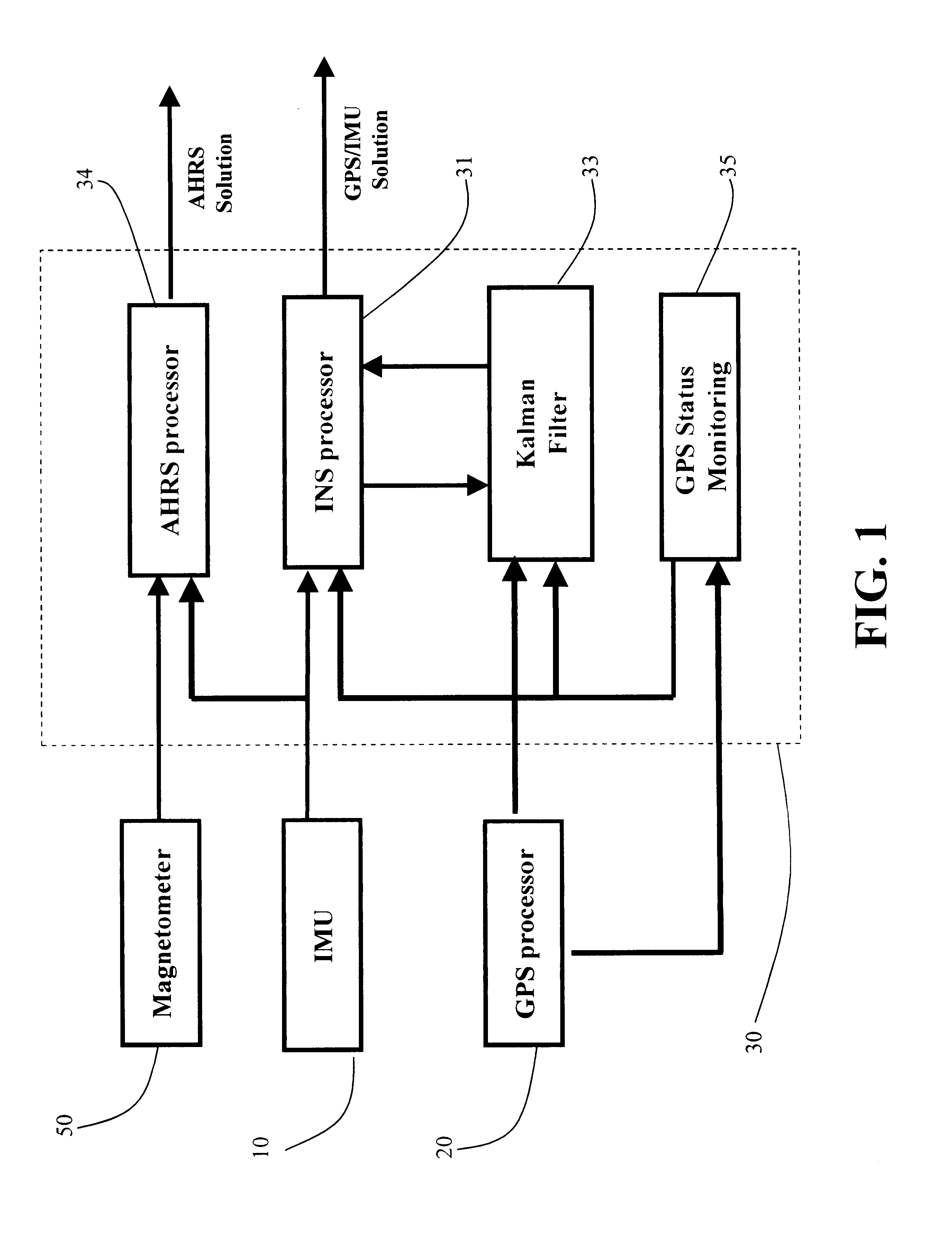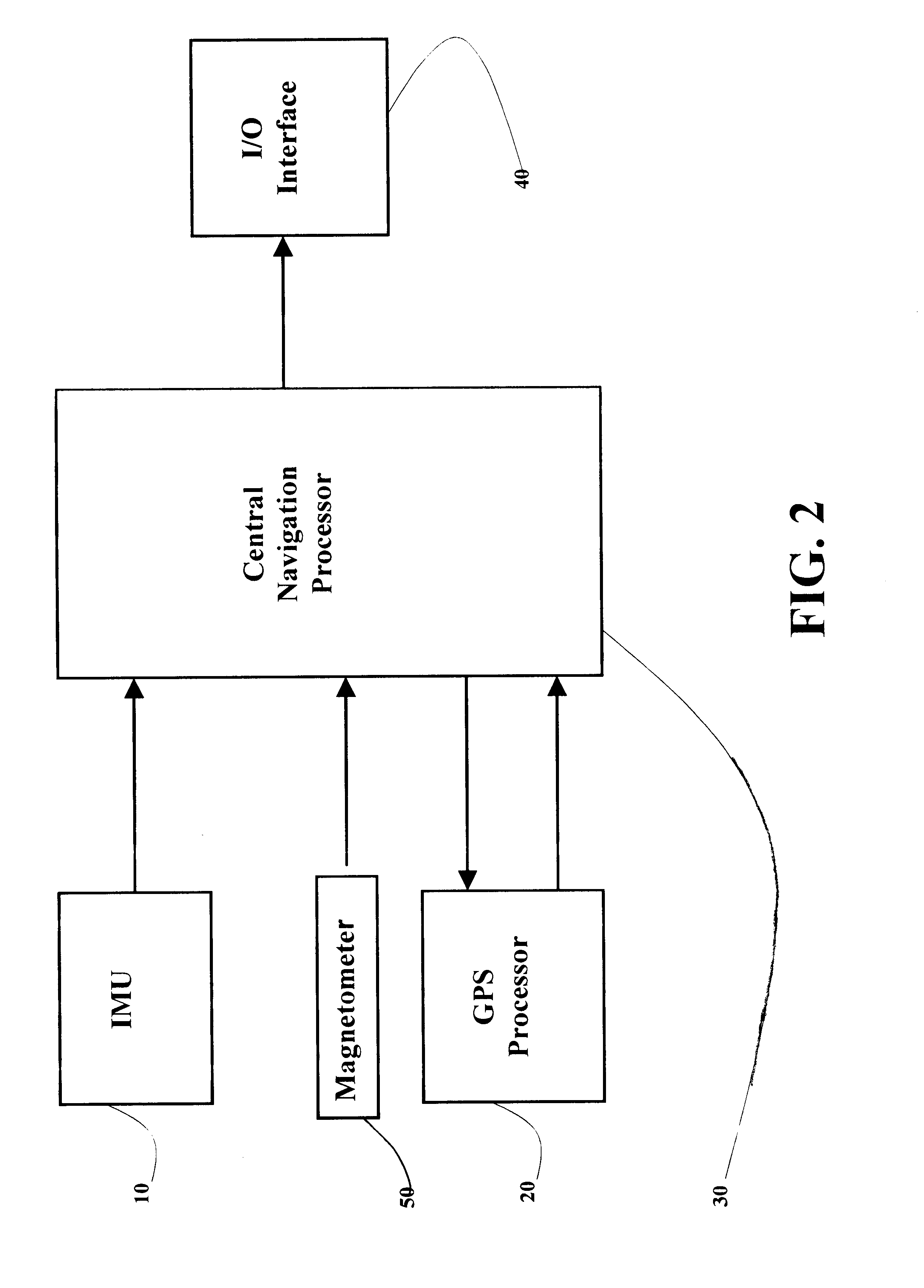Positioning and navigation method and system thereof
a positioning and navigation method technology, applied in surveying and navigation, navigation instruments, instruments, etc., can solve the problems of long-term error stability of global positioning system, inability to provide a stabilized attitude and heading solution, range error (ure), etc., to improve the performance of global positioning and inertial integration system
- Summary
- Abstract
- Description
- Claims
- Application Information
AI Technical Summary
Benefits of technology
Problems solved by technology
Method used
Image
Examples
Embodiment Construction
Referring to FIGS. 1 to 9 of the drawings, a positioning and navigation method and system thereof is illustrated. The positioning and navigation system, as shown in FIGS. 1 and 2, of the present invention comprises an IMU (inertial measurement unit) 10, a GPS (global positioning system) processor 20, and a magnetometer 50 connected to a central navigation processor 30. The navigation solution is output to an I / O (input / output) interface 40. The central navigation processor 30 comprises an AHRS (Attitude and Heading Reference System) processor 34, an INS (Inertial Navigation System) processor 31, a Kalman filter 33 and a GPS (Global Positioning System) status monitoring unit 35 which receives the GPS signals tracking indications, wherein the positioning and navigation system of the present invention outputs AHRS solution when GPS signals are not available.
As shown in FIG. 2, the GPS processor 20 receives a plurality of GPS satellite signals to derive position and velocity information...
PUM
 Login to View More
Login to View More Abstract
Description
Claims
Application Information
 Login to View More
Login to View More - R&D
- Intellectual Property
- Life Sciences
- Materials
- Tech Scout
- Unparalleled Data Quality
- Higher Quality Content
- 60% Fewer Hallucinations
Browse by: Latest US Patents, China's latest patents, Technical Efficacy Thesaurus, Application Domain, Technology Topic, Popular Technical Reports.
© 2025 PatSnap. All rights reserved.Legal|Privacy policy|Modern Slavery Act Transparency Statement|Sitemap|About US| Contact US: help@patsnap.com



